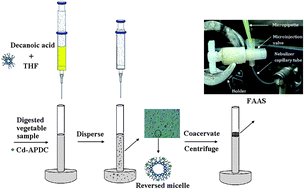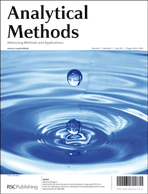Supramolecular-based dispersive liquid–liquid microextraction: determination of cadmium in water and vegetable samples
Abstract
A new simple, sensitive and cost effective method has been proposed for rapid determination of trace quantities of cadmium in vegetable samples, using supramolecular-based dispersive liquid–liquid microextraction (SM-DLLME) prior to its microsample introduction-


 Please wait while we load your content...
Please wait while we load your content...